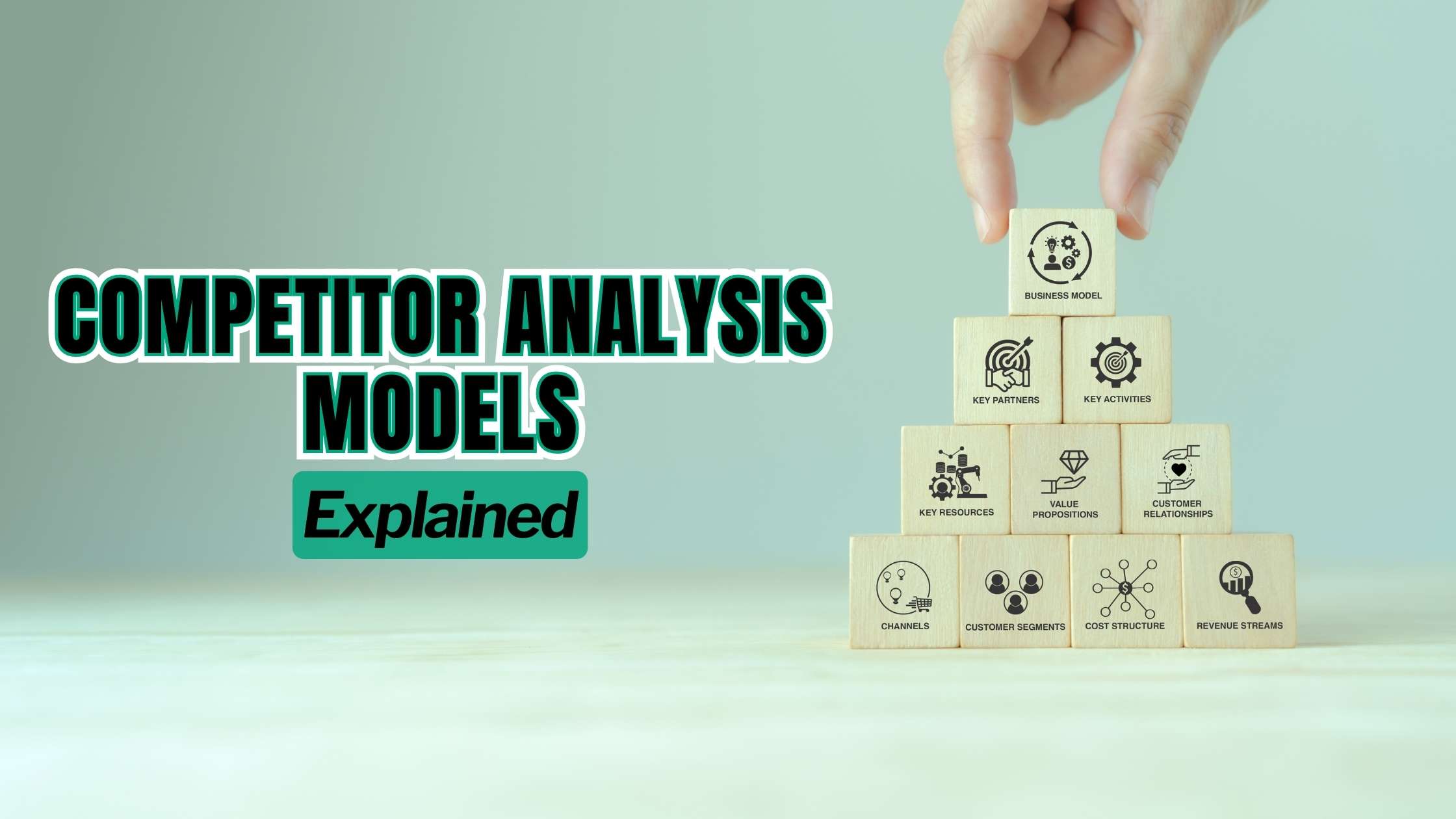Competitor Analysis Models: Explained
- Data as a Service (DaaS) Software Marketing & Analytics


Competitor Analysis Models: Explained
Competitor analysis is a vital aspect of strategic planning for businesses across industries. It involves evaluating the strengths and weaknesses of competitors to identify opportunities and threats in the market. However, conducting effective competitor analysis requires the use of appropriate models and frameworks. In this article, we’ll explore various competitor analysis models, their significance, and how businesses can leverage them to gain a competitive edge.
Understanding Competitor Analysis Models
1. Porter’s Five Forces:
Porter’s Five Forces model, developed by Michael Porter, is a framework for analyzing the competitive forces within an industry. It examines five key factors: the threat of new entrants, the bargaining power of buyers, the bargaining power of suppliers, the threat of substitute products or services, and the intensity of competitive rivalry. By assessing these forces, businesses can determine the attractiveness of an industry and devise strategies to position themselves advantageously.
2. SWOT Analysis:
SWOT analysis is a simple yet powerful tool for assessing a company’s strengths, weaknesses, opportunities, and threats. While primarily used for internal analysis, SWOT can also be applied to competitors to understand their relative positioning in the market. By identifying competitors’ strengths and weaknesses, businesses can capitalize on opportunities and mitigate threats more effectively.
3. Competitive Benchmarking:
Competitive benchmarking involves comparing a company’s performance metrics, products, or processes against those of its competitors. By benchmarking key performance indicators (KPIs) such as market share, profitability, customer satisfaction, and product quality, businesses can identify areas where they excel or lag behind competitors. This insight enables businesses to set realistic performance targets and implement strategies to outperform competitors.
4. Market Positioning Maps:
Market positioning maps visually represent the competitive landscape by plotting competitors’ offerings based on key attributes or dimensions that matter to customers. By analyzing these maps, businesses can identify gaps in the market, assess competitors’ positioning strategies, and determine the optimal positioning for their own products or services. Market positioning maps help businesses make informed decisions about pricing, product differentiation, and marketing strategies.
5. Game Theory:
Game theory is a mathematical framework for analyzing strategic interactions between competing entities. In the context of competitor analysis, game theory helps businesses anticipate competitors’ actions and responses in various scenarios. By modeling competitors’ behavior and decision-making processes, businesses can devise strategies to maximize their own utility while considering competitors’ likely reactions.
Leveraging SaaS Products for Competitor Analysis
In today’s digital age, several SaaS products offer specialized tools and features for conducting competitor analysis effectively. Here are some relevant SaaS products that businesses can leverage:
- SEMrush: SEMrush provides comprehensive competitive intelligence tools for SEO, PPC, content marketing, and social media. With features like domain analytics, keyword research, and traffic analysis, SEMrush enables businesses to gain insights into competitors’ online presence and digital marketing strategies.
- Ahrefs: Ahrefs offers powerful SEO tools for backlink analysis, keyword research, and content exploration. By analyzing competitors’ backlink profiles, organic search traffic, and content performance, businesses can identify link building opportunities, keyword gaps, and content strategies to improve their own search rankings.
- Moz: Moz provides a suite of SEO tools, including site audits, rank tracking, and keyword research. With Moz’s competitive analysis features, businesses can track competitors’ search rankings, monitor changes in search visibility, and identify areas for SEO improvement.
- SimilarWeb: SimilarWeb offers market intelligence solutions for understanding competitors’ website traffic, audience demographics, and online behavior. By analyzing competitors’ website traffic sources, engagement metrics, and user demographics, businesses can gain insights into competitors’ digital marketing strategies and identify opportunities for growth.
- SpyFu: SpyFu specializes in competitive research for PPC advertising and keyword analysis. With features like competitor keyword research, ad history, and PPC competitor analysis, SpyFu helps businesses uncover competitors’ paid search strategies and identify lucrative keywords to target.
Conclusion
Competitor analysis models play a crucial role in helping businesses understand their competitive landscape, identify opportunities, and formulate effective strategies. By leveraging frameworks such as Porter’s Five Forces, SWOT analysis, competitive benchmarking, market positioning maps, and game theory, businesses can gain valuable insights into competitors’ strengths, weaknesses, and strategic intent. Additionally, by utilizing specialized SaaS products tailored for competitor analysis, businesses can streamline the process and gain a competitive edge in their industry.
As businesses seek to enhance their competitive intelligence capabilities and optimize their strategic decision-making processes, platforms like Subscribed.FYI offer invaluable resources and insights. Subscribed.FYI provides a centralized platform for discovering, comparing, and managing SaaS tools, including those relevant to competitor analysis and market intelligence. By accessing Subscribed.FYI Deals, businesses can unlock exclusive savings on essential SaaS products, empowering them to maximize efficiency and drive success in the competitive business landscape.
Relevant Product Links:
Explore Subscribed.FYI:





